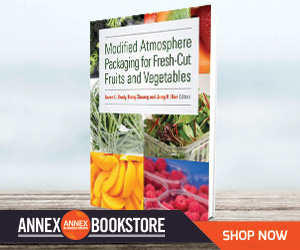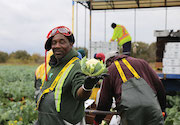| |
| |
 |
 |
| |
 |
|
@{mv_date_MMM d, yyyy}@ |
|
| |
 As the first and only FRAC Group U13 fungicide, Gatten controls powdery mildew that may have developed tolerance to Groups 3, 7 or 11 fungicides and has shown no cross-resistance to existing products.
» Read more...
As the first and only FRAC Group U13 fungicide, Gatten controls powdery mildew that may have developed tolerance to Groups 3, 7 or 11 fungicides and has shown no cross-resistance to existing products.
» Read more...
This new phase of the LFIF has been tailored to meet the needs of Indigenous, Northern and remote communities by providing funding to build a food system that meets both current and future community needs.
» Read more...
The Niagara Community Observatory at Brock University is conducting a series of surveys in Ontario’s horticulture sector to learn how research about BMPs is shared, accessed, and used.
» Read more...
|
| |
|
| |

Modified Atmosphere Packaging for Fresh-cut Fruits and Vegetables provides comprehensive coverage of all aspects of modern MAP technologies for fresh-cut fruits and vegetables. Coverage begins with the general MAP concept and application by introducing the concept of MAP, how MAP works for fresh-cut produce and the benefits and shortfalls of MAP in its application. The book then discusses the basic aspects of MAP – packaging materials and machinery. Coverage of this important aspect is included in the book since fresh-cut manufacturers spend much more time in the day-to-day operations on packaging machinery and systems as compared to packaging film materials. In the final section, Modified Atmosphere Packaging for Fresh-cut Fruits and Vegetables highlights the latest developments in the packaging industry and how they could impact the fresh-cut industry.
» Order now |
| |
|
| |
 In 2019, the CBC reported that roughly 58 per cent of food produced in Canada becomes food waste. In a Guelph Organics Conference session about reducing food waste in agricultural production systems, farmer Wolfgang Pfenning of Pfenning’s Organic Farm shared his insights on the factors contributing to food waste at each step of his production line.
» Read more...
In 2019, the CBC reported that roughly 58 per cent of food produced in Canada becomes food waste. In a Guelph Organics Conference session about reducing food waste in agricultural production systems, farmer Wolfgang Pfenning of Pfenning’s Organic Farm shared his insights on the factors contributing to food waste at each step of his production line.
» Read more... |
| |
 The report, which provides an annual look at the regional land value trends across Canada, shows farmland values continued to rise despite last year’s challenges, including extreme weather and supply chain disruptions. Rising commodity prices and historically low interest rates have driven demand for farmland value growth.
» Read more...
The report, which provides an annual look at the regional land value trends across Canada, shows farmland values continued to rise despite last year’s challenges, including extreme weather and supply chain disruptions. Rising commodity prices and historically low interest rates have driven demand for farmland value growth.
» Read more... |
| |
|
| |
|
|
| |
| |






